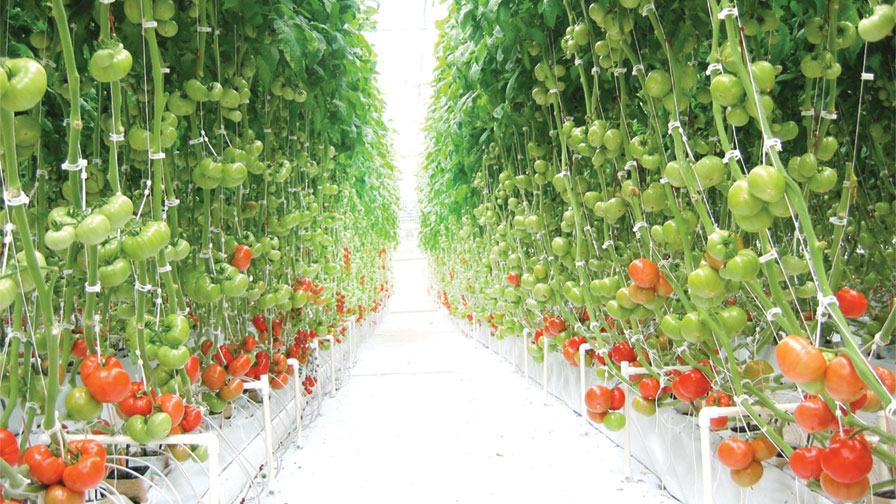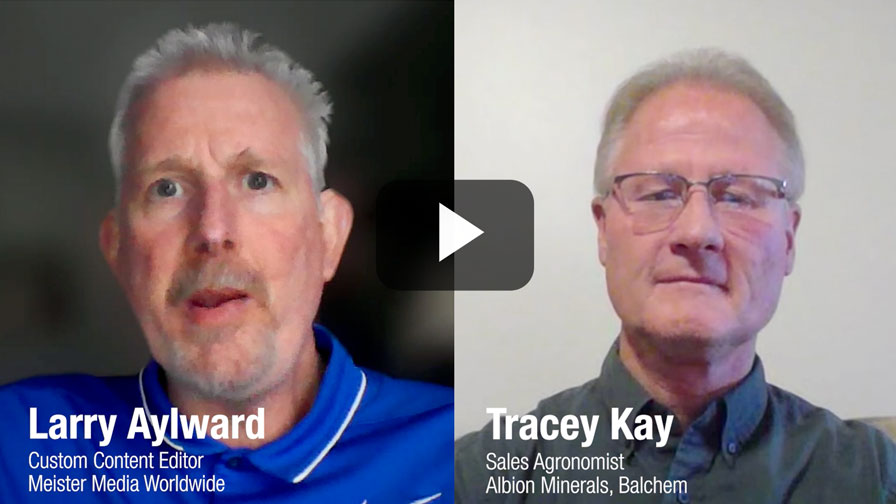Weighing the Good and Bad of Six Soilless Media Options
 Growing greenhouse vegetables is one of the most exacting and intensive forms of all agricultural enterprises. It needs high technology and is capital intensive and highly productive.
Growing greenhouse vegetables is one of the most exacting and intensive forms of all agricultural enterprises. It needs high technology and is capital intensive and highly productive.

For success, a grower must have a clear understanding of the selected growing media.
In the past few years, soilless media and liquid media has overtaken growing in soil, which has been the standard method worldwide. Why? It comes down to control: control to reduce soil-borne diseases, control of mineral nutrition, and more control over fruit quality.
Another disadvantage of soil-based media is that fumigants to control root diseases increasingly are being discontinued due to government regulations, plus they do not effectively control diseases below 18 to 24 inches of soil, a factor for deep-rooted crops such as tomatoes.
The advantages of soilless media also plays a role in why it has overtaken soil. Today’s hydroponic/soilless technology, in combination with greenhouses (termed controlled environment agriculture), is precise, providing control of air and root temperatures, irrigation, plant nutrition, humidity, carbon dioxide, and even light intensity.

All of these, with the exception of vermiculite and perlite, are marketed in cubes for seeding purposes. Coco coir, rockwool, and foam may also come in grow bags. Except for rockwool and foam, each medium may come bulk in bags and/or bales.
Other than cubes and blocks for transplant production, the various media or mixes may be placed in grow trays of plastic or styrofoam with various cell sizes. Each media, whether in cubes, block, or growing trays, will grow good vegetable transplants but may differ in irrigation scheduling and nutritional requirements.
Compressed coir grow slabs measure 40 inches long, 6 to 8 inches wide, and 1 to 2 inches in thickness. They’re light in weight and easily placed into the greenhouse. With water added, the slabs expand to a thickness of 5 or more inches. In most cases, the slabs were lower in cost in comparison to other media options and easily disposable.
 After one or two years of use in growing tomatoes, cucumbers, and peppers, the waste is easily shredded and disposed of as a mulch in open-field soils, or bagged and sold at farm markets for use in gardens and container production of flowers and vegetables.
After one or two years of use in growing tomatoes, cucumbers, and peppers, the waste is easily shredded and disposed of as a mulch in open-field soils, or bagged and sold at farm markets for use in gardens and container production of flowers and vegetables.
If you mix your own media, it is extremely important that the mixing equipment and procedures, whether on a concrete floor using shovels or in a cement mixer, be exceptionally clean and sanitized so as not to contaminate the mix with soil borne diseases such as pythium, etc.
The Most Common Vegetable Crops Grown in Greenhouses
The vegetable crops commonly grown today in greenhouses are:
• Tomatoes
• Cucumbers
• Peppers
• Leafy vegetables
• Herbs
Fruiting vegetables are most commonly grown in a solid, soilless media, while leafy greens and herbs are grown in a liquid media consisting of water and all essential nutrient elements.
Can Soilless Media Be Considered Organic?
Due to increased demand, there is a growing interest in producing organic greenhouse vegetables. At present, the USDA is reconsidering the rules and regulations governing organic certification. Hopefully, good science will prevail and recognize growing media of natural origin such as coco coir and peat moss as organic.
The History of Soilless Media in the U.S.
Soilless media was first introduced to the greenhouse vegetable industry in the mid-1960s through research at Cornell University and Rutgers University. Soilless media was primarily composed of peat moss and vermiculite and placed in containers that were upright or pillow-type bags approximately 3-feet in length. Shortly thereafter, perlite and rockwool were introduced to North America, as well as sawdust in western Canada. It became increasingly expensive to dispose of both perlite and rockwool, as both are non-degradable and dump charges were costly if buried in public landfills. In the mid-1990s, coconut coir was introduced to North America and quickly became popular.
Merle Jensen ([email protected]) is Professor Emeritus at the University of Arizona, Tucson, and a partner in Greenhouse Vegetable Consultants.









